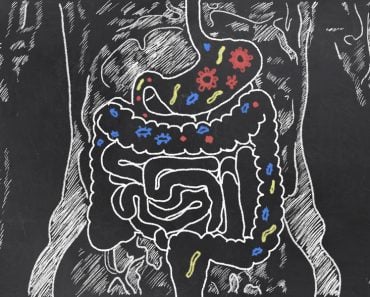Table of Contents (click to expand)
Lactose intolerance is a condition in which a patient cannot easily break down or digest lactose. Lactose is a naturally occurring sugar in milk and milk products. The human body needs lactase, an enzyme found in the intestines – to break down this lactose into smaller sugars that can be digested by the body. Lactose intolerance is one of the many conditions that are discussed with unprecedented fervor these days. You may have a friend or relative suffering from this condition, or you might even have this affliction yourself.
Lactose intolerance is a condition in which a patient cannot easily break down or digest lactose. Lactose is a naturally occurring sugar in milk and milk products. The human body needs lactase, an enzyme found in the intestines – to break down this lactose into smaller sugars that can be digested by the body.
Lactose intolerance is one of the many conditions that are discussed with unprecedented fervor these days. You may have a friend or relative suffering from this condition, or you might even have this affliction yourself. This comes as no surprise, since a great number of people – more than you think – suffer from lactose intolerance.
In fact, many people don’t realize that they have this problem, until one day, when they eat a whole lot of ice cream and then all hell breaks loose.

Lactose intolerance is extremely common. In India, for example, more than 10 million people are diagnosed as being lactose intolerant every year! It’s clear that lactose intolerant people are not supposed to eat dairy products (if they want to avoid nasty symptoms like bloating, diarrhea, gas etc.), but what if they actually consume something that contains milk?
What happens when a lactose intolerant person eats/drinks something that contains milk or some other dairy product? What goes on inside their body during such a scenario?
We’ll get to that later, but right now, we need to look at the ‘what’ aspect.
Recommended Video for you:
What Is Lactose Intolerance?
Lactose intolerance is a condition in which a patient cannot easily break down or digest lactose. Lactose is a naturally occurring sugar in milk and milk products. The human body needs lactase, an enzyme found in the intestines – to break down this lactose into smaller sugars that can be digested by the body.

So, if a lactose intolerant person consumes milk (or any such dairy product), the lactose present in the milk is not broken down into simpler sugars, which then causes some nasty symptoms.
Causes Of Lactose Intolerance
Lactose intolerance can affect both children and adults. The primary reason behind this condition is that the small intestine of the patient doesn’t make enough of a specific enzyme called lactase. Possible causes of lactose intolerance may include injury to the small intestine, digestive diseases, infection, or a family history of lactose intolerance.

Also, premature babies run a reliably higher risk of being lactose intolerant. However, this sort of lactose intolerance is often a short-term problem, and eventually disappears as the child ages (Source).
Lactose Intolerance Symptoms
The most definitive symptoms of lactose intolerance include bloating, gas, watery and odd-smelling stools (diarrhea), and even abdominal pain in some cases.
How bad your symptoms are depends on how much dairy you have consumed and how much of a tolerance you have for lactose. If you get an upset stomach, nausea, flatulence or diarrhea about 30 minutes to 2 hours after you’ve consumed a dairy product, it’s highly likely that you are lactose intolerant, and it’s time to go see a doctor about it.
Once it’s confirmed that you are lactose intolerant, does this mean that you can never touch dairy products again? What exactly happens in the digestive system of an afflicted person when they consume milk or other dairy products?

What Happens When A Lactose Intolerant Person Consumes A Dairy Product?
A large proportion of the population stops producing lactase (a pancreatic enzyme), which breaks down lactose into glucose and galactose after they are weaned. If a lactose intolerant person consumes a dairy product, it remains in the lumen (i.e., the inside space) of the bowel where it osmotically attracts water, which leads to diarrhea.
Also, when the lactase enzyme is not present in the system, the undigested lactose (from the dairy product) is attacked by certain gut bacteria, which produces a bunch of nasty byproducts. Methane is one of these, and is responsible for the flatulence or gas that a lactose intolerant person experiences after consuming a dairy product.
The whole mess of the material becomes too much to handle for the digestive system, and is therefore shoved along the digestive tract, which makes one want to poop just minutes after they’ve drunk a glass of milk!

Interestingly, however, lactose intolerance is so common and usually harmless that many people don’t consider it an affliction at all, but rather an unfortunate condition that you can avoid by simply eliminating dairy from your regular diet.
References (click to expand)
- Lactose Intolerance | MUSC Health | Charleston SC. muschealth.org
- Lactose Intolerance in Children - Health Encyclopedia - URMC. The University of Rochester Medical Center
- Lactose Intolerance - Penn State Extension. The Pennsylvania State University
- Lactose Intolerance | NIDDK. The National Institute of Diabetes and Digestive and Kidney Diseases
- What I need to know about Lactose Intolerance. efnep.ucanr.edu













